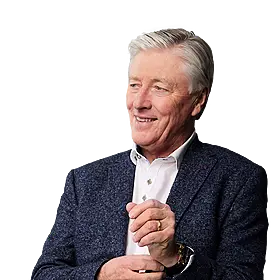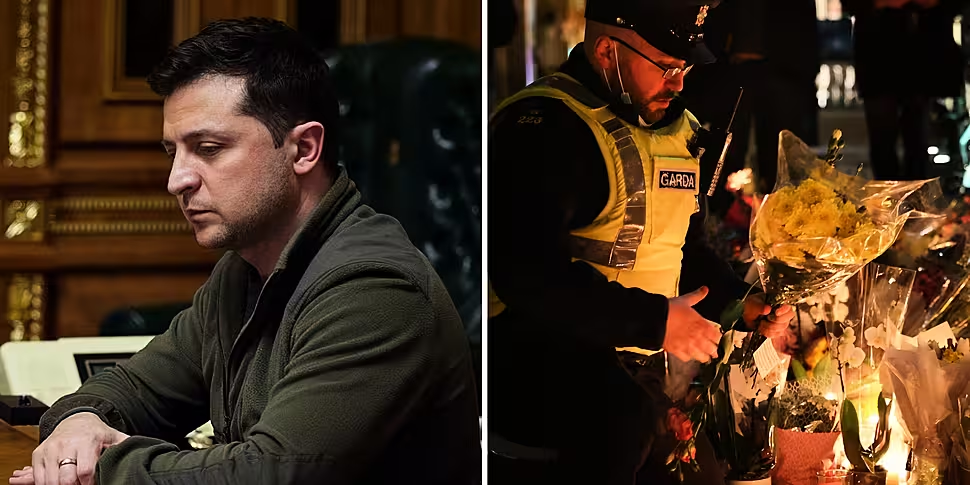2022 has been another dramatic year in which old certainties have faded away and new challenges have emerged.
Newstalk reporter James Wilson has chosen five of the stories this year will be remembered for.
Russia invades Ukraine
It was February when Putin’s tanks and troops began to march into Ukraine, certain they would be in Kyiv within days, lauded as liberators by grateful locals.
Instead, they encountered a free people who refused to be conquered.
“The fight is here; I need ammunition, not a ride,” Ukraine's President Zelenskyy told the US Embassy after they offered to evacuate him to safety.
 Ukrainian President Volodymyr Zelenskyy participates in a flag-raising ceremony in the centre of Kherson, 14-11-2022. Image: UPI/Alamy
Ukrainian President Volodymyr Zelenskyy participates in a flag-raising ceremony in the centre of Kherson, 14-11-2022. Image: UPI/AlamyThe quip is 262 words shorter than the Gettysburg Address but is likely to go down in history as one of the great statements of military intention.
Since then, Ukrainians have fought back against their invaders and retaken slightly over half of the territory originally annexed by Russia.
But it has come at a huge cost; US officials estimate that each side has lost at least 100,000 personnel and many more have been gravely wounded.
 F5DGYC Ukrainian Army Ground Forces soldiers near Yavoriv, Ukraine. Picture by: Alamy.com
F5DGYC Ukrainian Army Ground Forces soldiers near Yavoriv, Ukraine. Picture by: Alamy.comThe consequences of Putin’s action have also been felt far beyond the borders of Eastern Europe as Western sanctions against Russia plunge nations into recession and millions of people into poverty.
The reason you are wrapped up warm in a blanket this winter is because Governments are reducing their use of Russian fossil fuels and the price of oil and gas from other suppliers has surged.
The conflict has also brought over 50,000 Ukrainians to Ireland’s shores seeking refuge from Putin’s bombs and bullets. Their arrival has changed the face of communities the length and breadth of the island.
No matter how long they stay for, their presence means the story of Ukraine in 2022 is part of the story of Ireland as well.
Mask mandate ends
On the final day of February, the wearing of masks on public transport and in shops became optional.
Just under two years since Ireland went into lockdown, the last significant public health measure had been lifted.
“We are moving from the emergency phase of the pandemic into a new transitionary phase,” a delighted Taoiseach Micheál Martin said.
“The public health rationale no longer applies in terms of retaining regulations around the mandatory wearing of masks.
“People may feel more comfortable wearing masks, but they won’t be mandatory.”
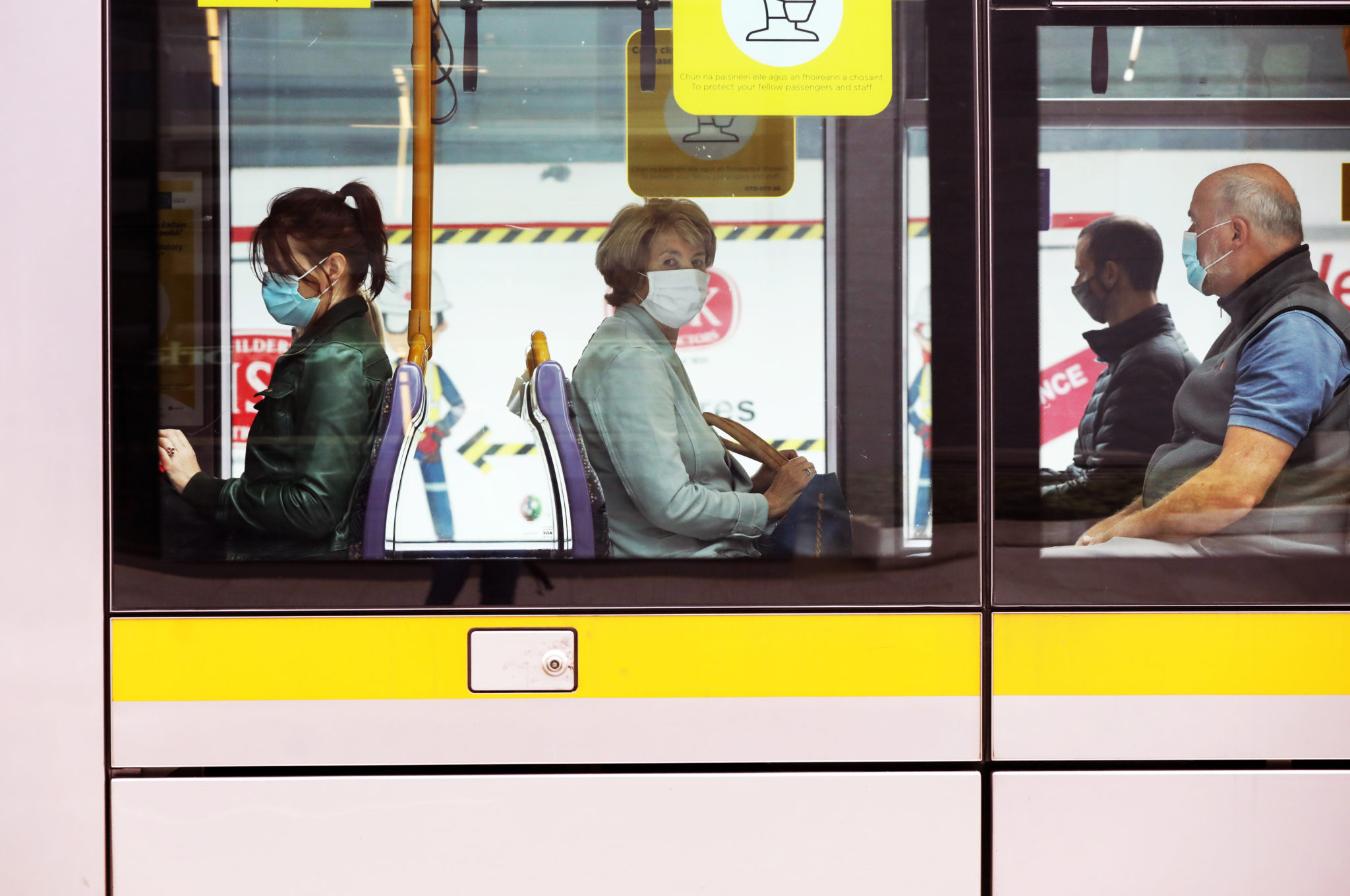 Passengers wearing face masks on the Luas in Dublin. Picture by: Leah Farrell/Rollingnews.ie
Passengers wearing face masks on the Luas in Dublin. Picture by: Leah Farrell/Rollingnews.ieThe first lockdown in March 2020 was a moment few people will ever forget; only those who had been to prison had ever been deprived of their liberty by the State in such a blunt and uncompromising manner.
In the months that followed, COVID-19 killed thousands of Irish people and many more fell gravely sick with the virus; it ended businesses, forced people to cancel cherished plans and has caused a terrible backlog in our health service.
But on 28th February, our relationship with COVID-19 changed forever. The disease will always be with us, but it should never again exert such terrifying control over our lives.
Sinn Féin top the poll in the Northern Assembly election
“Today represents a very significant moment of change,” Sinn Féin’s Vice President Michelle O’Neill said as results poured in for May’s Assembly Election.
On ballot after ballot, voters had placed a number 1 mark against their local Sinn Féin candidate and the party was on track for an historic victory.
The northern state, created to ensure a durable unionist majority, had voted to elect a nationalist as its First Minister for the first time.
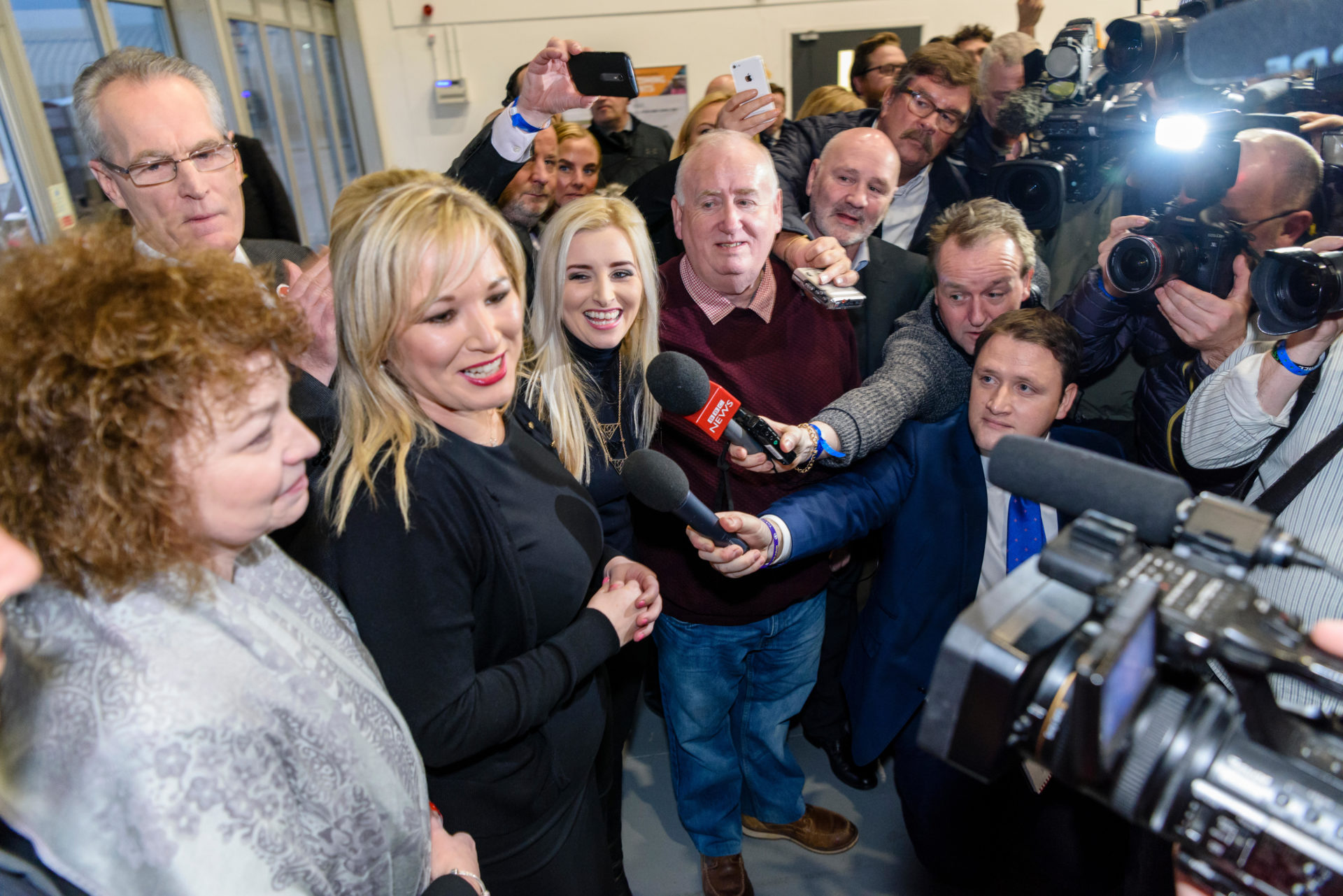 Sinn Féin's Michelle O'Neill is interviewed.
Sinn Féin's Michelle O'Neill is interviewed.The days when Stormont could be accurately described as a “Protestant parliament for a Protestant people” had well and truly been consigned to the dustbin of history.
Sinn Féin won 27 seats to the DUP’s 25 and, under the terms of the Good Friday Agreement, Ms O’Neill has the right to be nominated as First Minister.
But seven months on, the office of First Minister is a dormant one.
The DUP have refused to nominate a Deputy First Minister and the Good Friday Agreement is clear that the office is a joint one; like two parents joined awkwardly together for a three legged race at a school sports day, neither can do anything without the other’s cooperation.
For three years, Ms O’Neill and Sinn Féin kept the Assembly down because they wanted an Irish language act and gay marriage.
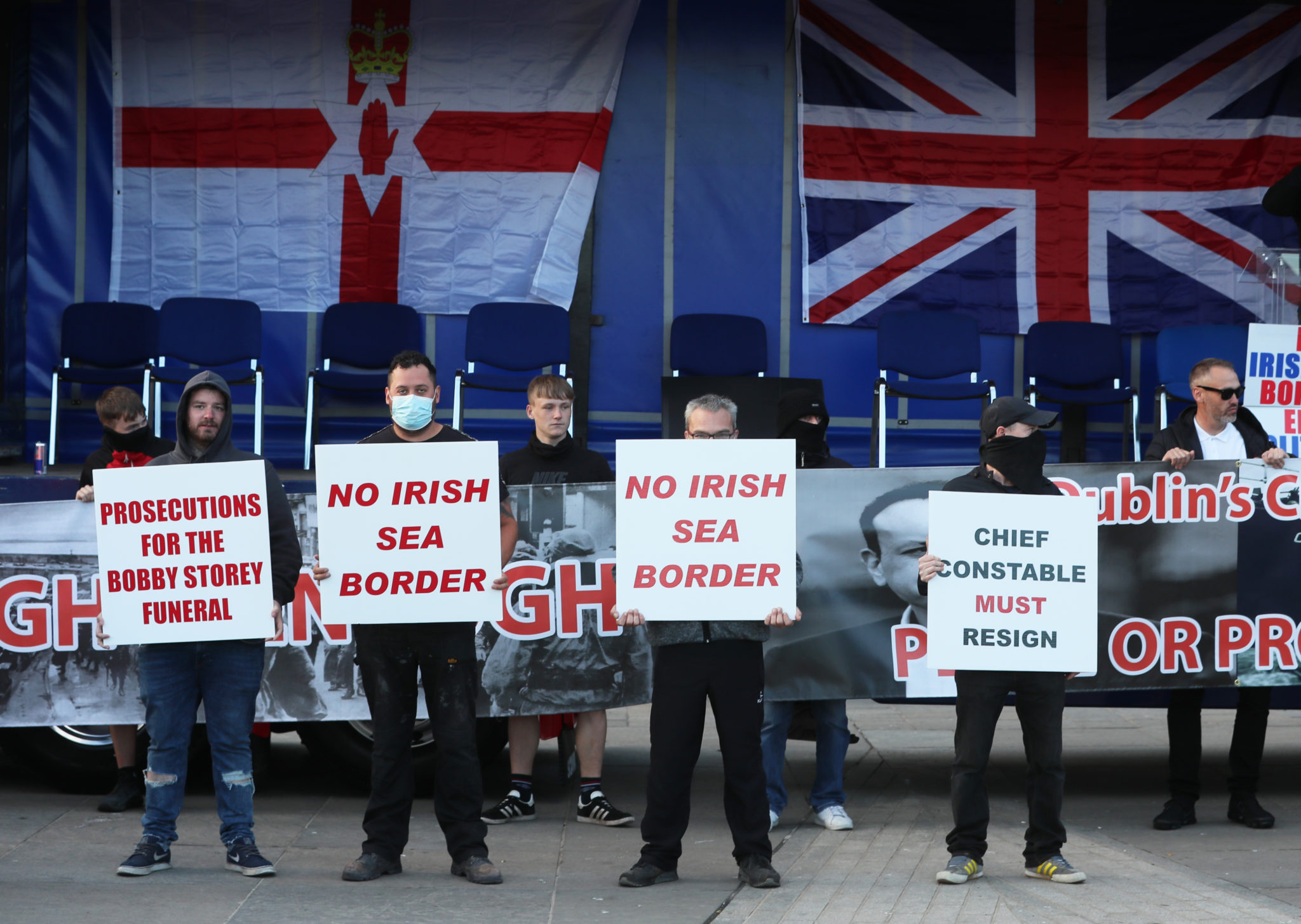 People take part in a Loyalist protest in Newtownards, County Down, against the Northern Ireland Protocol. Picture date: Friday June 18, 2021.Brian Lawless/PA Wire/PA Images
People take part in a Loyalist protest in Newtownards, County Down, against the Northern Ireland Protocol. Picture date: Friday June 18, 2021.Brian Lawless/PA Wire/PA ImagesNow, the issue is Brexit and the Northern Ireland Protocol.
After the United Kingdom left the European Union, London agreed that goods moving from Great Britain to Northern Ireland would be subjected to customs checks - thus ensuring no hard border would return on the island of Ireland.
The solution has enraged the DUP, which has labelled it an ‘Irish Sea Border’ and refused to serve in a Northern Executive until the issue is dealt with to their satisfaction.
Officials from London and Brussels are fleshing out how the protocol can be changed, but only time will tell if the DUP can be satisfied enough to resurrect an Executive led by a Sinn Féin First Minister.
The murders of Ashling Murphy, Aidan Moffitt and Michael Snee
In January, 23-year-old Ashling Murphy slipped on her running shoes and made a beeline for the Grand Canal in Tullamore, Offaly.
That ordinary decision, on an ordinary day ended up being the last she ever made.
Her murder triggered a wave of grief across Ireland and thousands came together across the island to mourn her passing.
Candles were lit, homemade placards were held defiantly aloft and people spoke of the urgent need for a world where violence against women does not exist.
“I think what’s different this time… [is] I think every person has pictured Ashling as someone they know,” Justice Minister Helen McEntee said at the time.
31-year-old Jozef Puska has since been charged with her murder.
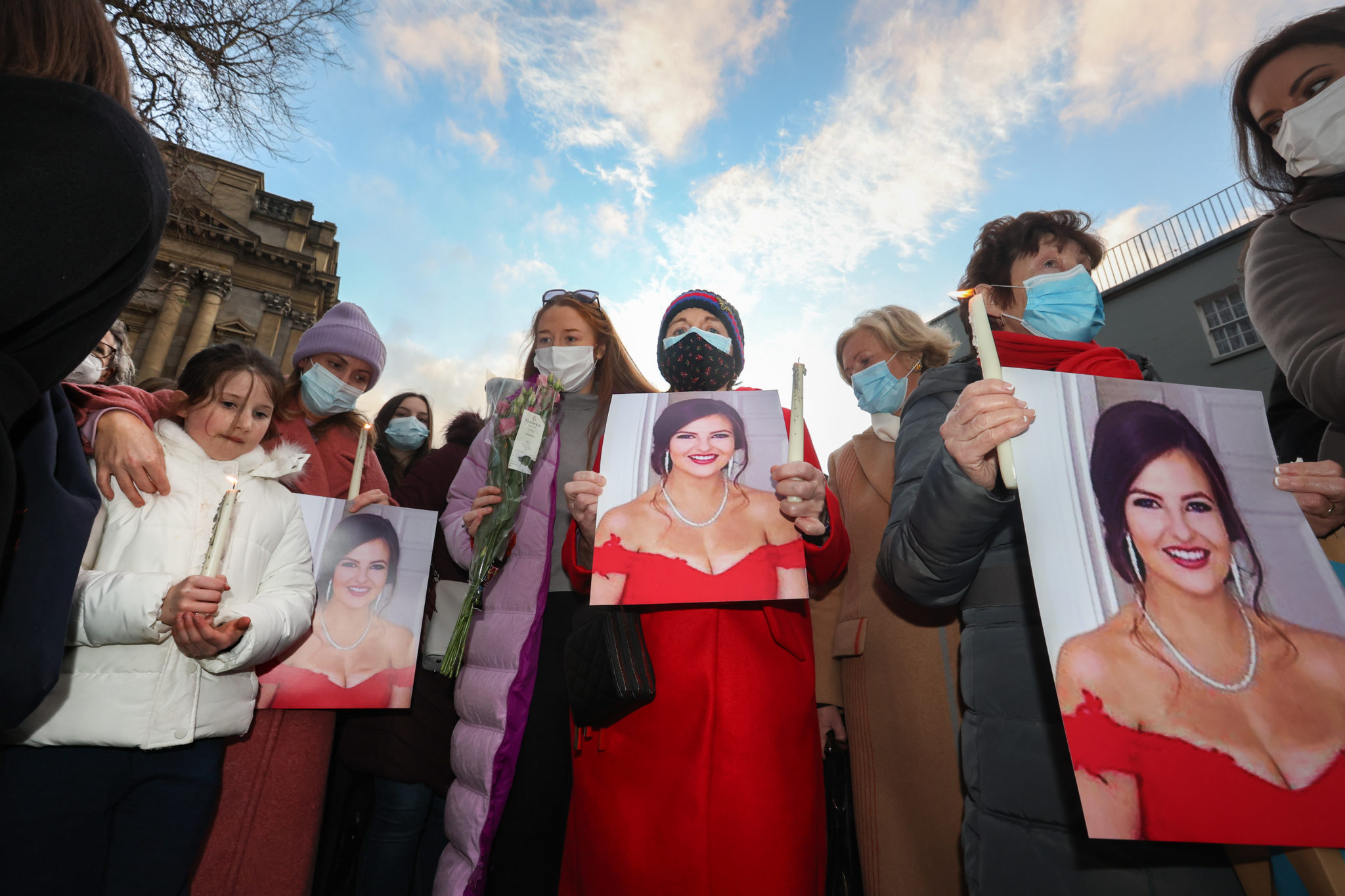 Women hold photos of Ashling Murphy outside Dáil Éireann in Dublin as part of a vigil. Picture by: Sam Boal / RollingNews.ie
Women hold photos of Ashling Murphy outside Dáil Éireann in Dublin as part of a vigil. Picture by: Sam Boal / RollingNews.ieThree months later, news broke that two men, Michael Snee and Aidan Moffitt, had been killed in Sligo.
Both Aidan and Michael were gay men and, for LGBT people, their killings were a painful reminder that the community is at disproportionate risk of violence.
Once again, candles were lit, banners were brandished and mourners gathered together to reflect on two lives cruelly ended well before their time.
Yousef Palani, 22, has been charged with their murders.
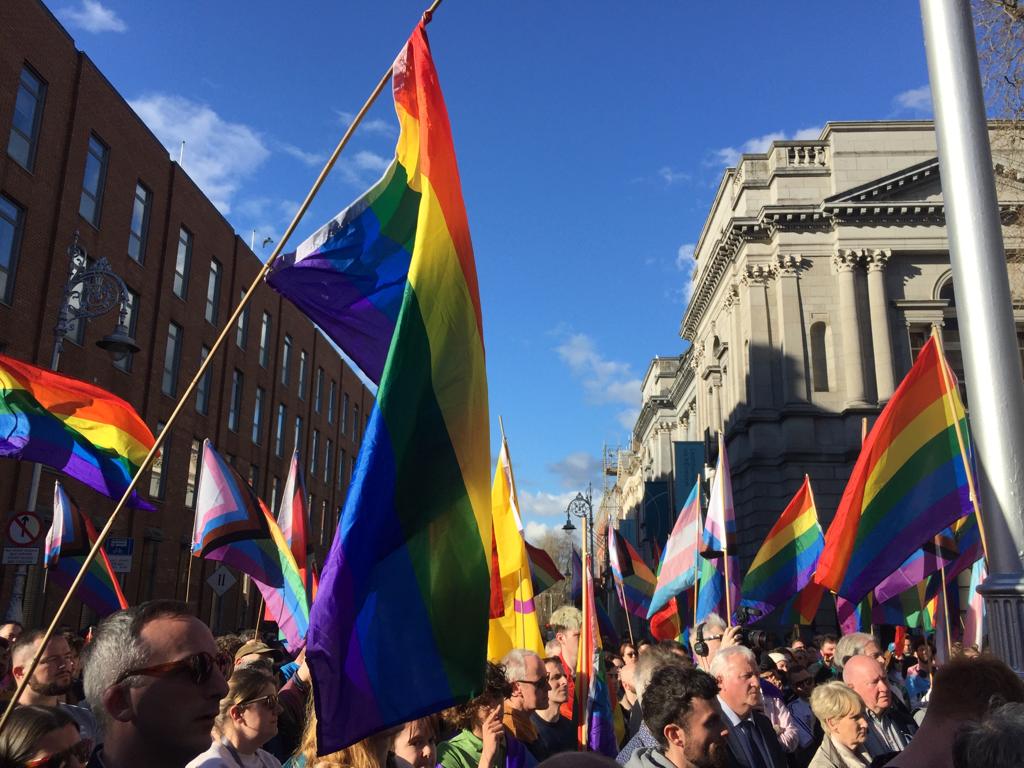 Pride flags fly at a vigil being held outside Dáil Éireann in Dublin for Aidan Moffitt and Michael Snee. Picture by: James Wilson/Newstalk
Pride flags fly at a vigil being held outside Dáil Éireann in Dublin for Aidan Moffitt and Michael Snee. Picture by: James Wilson/NewstalkIn 1983, following the murder of Declan Flynn, LGBT groups organised the biggest pride march in the history of the State.
At the front of the demonstration, they were joined by various women’s groups and a banner was unfurled that demanded ‘STOP VIOLENCE AGAINST WOMEN AND GAYS’.
39 years later and the message is as relevant as ever.
The death of Britain’s Queen Elizabeth II
On 7th September, a press release from Balmoral Castle pinged into journalists’ inboxes, noting that a virtual meeting of Queen Elizabeth II’s Privy Council had been postponed.
The previous day, the British Queen had appointed Liz Truss as the 15th British Prime Minister of her 70-year reign and the 96-year-old British Monarch would be taking things easy.
“After a full day yesterday, Her Majesty has this afternoon accepted doctors’ advice to rest,” a spokesperson said.
Queen Elizabeth had been in increasingly frail health for some time.
In October last year she pulled out of a church service to mark the centenary of Northern Ireland on medical advice and appearances to celebrate her Platinum Jubilee over the summer had been limited.
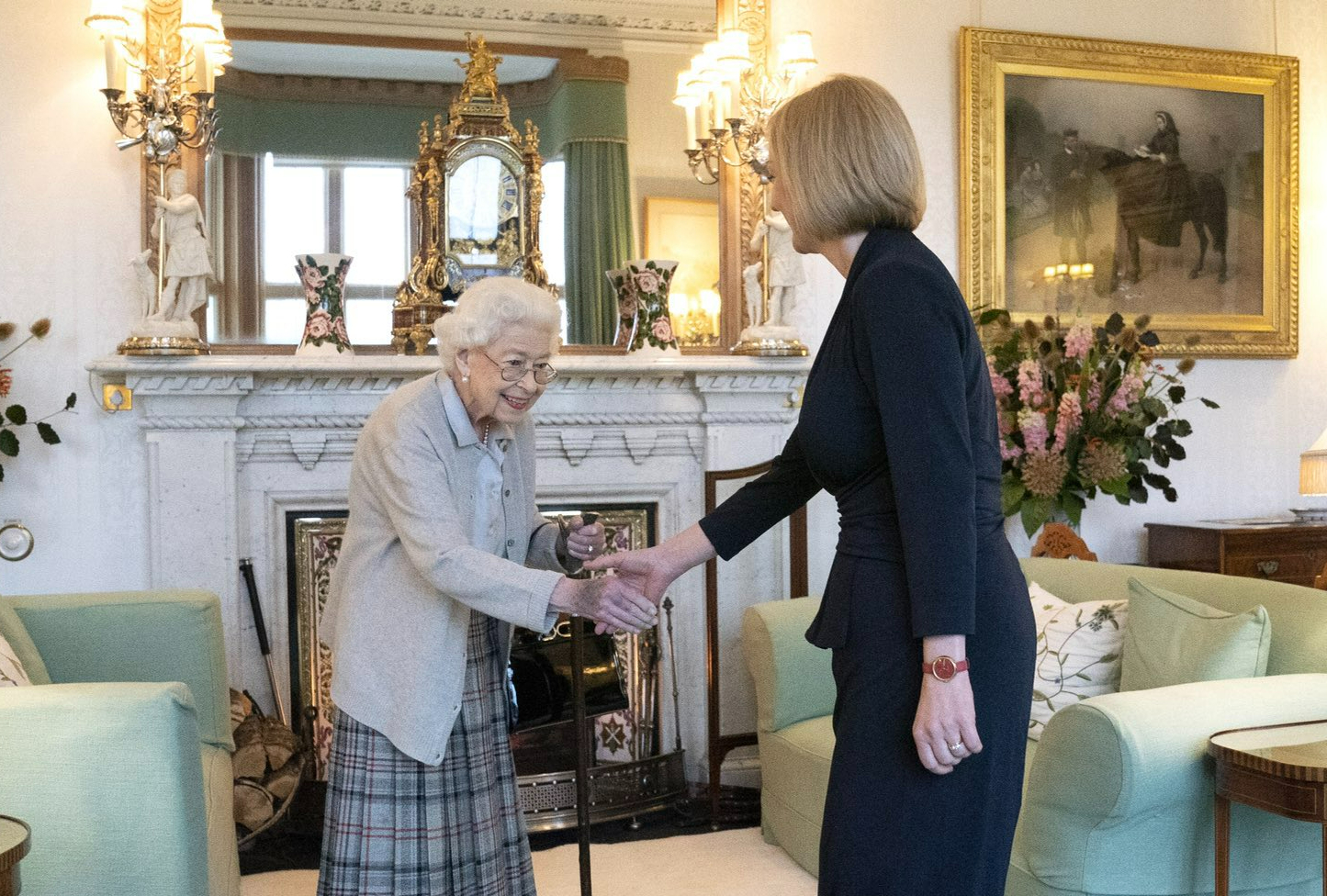 The new British Prime Minister Liz Truss meets Queen Elizabeth.
The new British Prime Minister Liz Truss meets Queen Elizabeth.The following day, Buckingham Palace announced that members of Britain’s Royal Family were racing to Balmoral to be at her side and at 6.30pm the BBC’s Huw Edwards announced her demise to the world.
Her successor, King Charles III paid tribute to his mother as someone whose “dedication and devotion as Sovereign never wavered” and pledged himself to “lifelong service”.
Queen Elizabeth II officially reigned over 15 countries as monarch and was the symbolic head of the 56-member Commonwealth of Nations.
Her death saw millions of flags across the world hauled down to half-mast and thousands of officials rummaging inside wardrobes for black suits and dark dresses. Tears were wiped away and protocol documents, carefully prepared over many years, were clicked open.
 2K0G10W Following her death, Queen Elizabeth's cortege arrives in Edinburgh on 11th September 2022.
2K0G10W Following her death, Queen Elizabeth's cortege arrives in Edinburgh on 11th September 2022.New Zealand Prime Minister Jacinda Ardern said she had been woken up in the middle of the night by a police man who brought her the news.
“There is no doubt that a chapter is closing today,” she said.
“With that, we share our thanks for an incredible woman who we were lucky enough to call our Queen.”
Canadian Prime Minister Justin Trudeau said the late monarch had been “one of my favourite people in the world”.
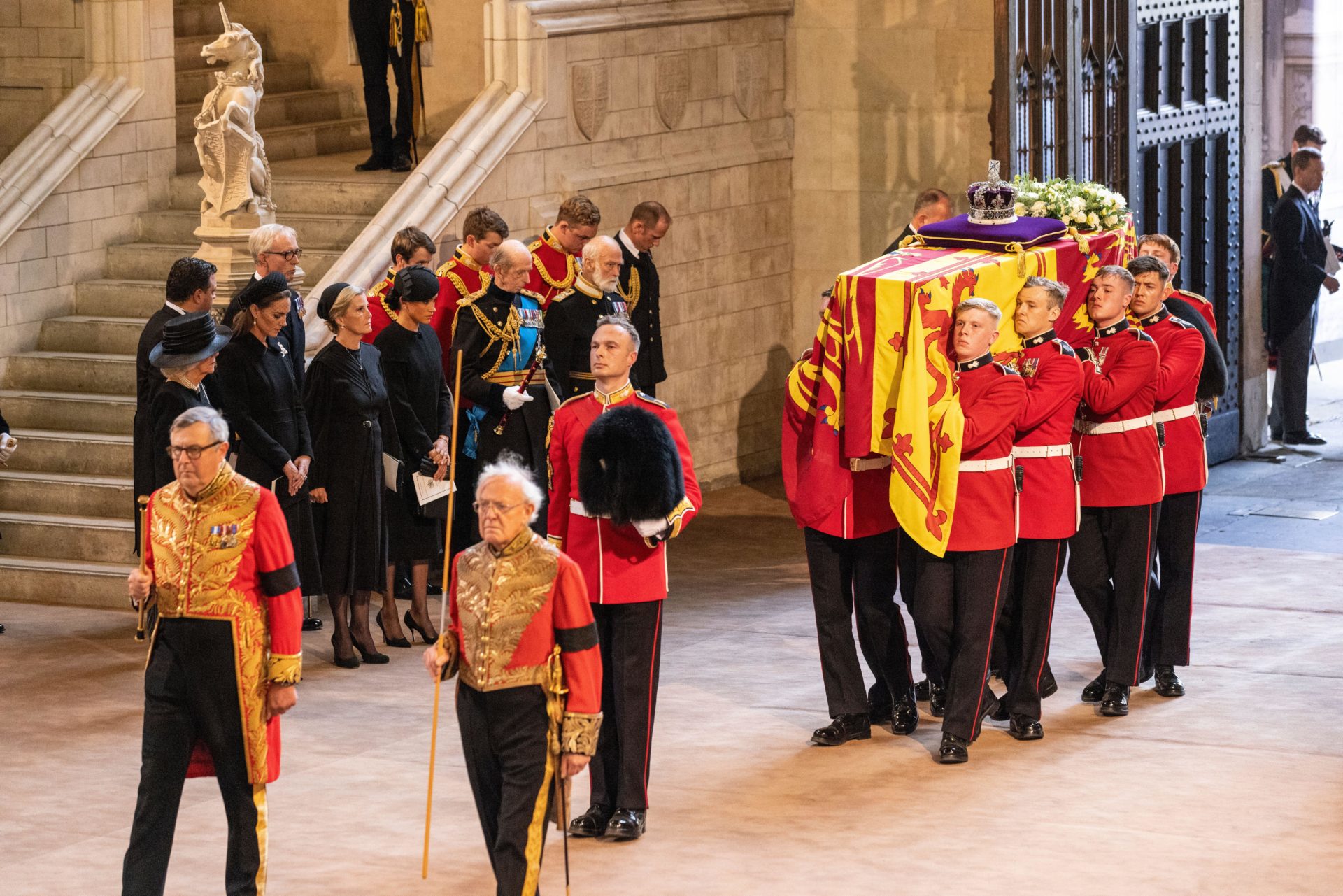 Arrival of the Coffin of Her Majesty Queen Elizabeth II at the Palace of Westminster on Wednesday 14 September 2022. Credit: Jeff Gilbert/Alamy Live News Credit: Jeff Gilbert/Alamy Live News
Arrival of the Coffin of Her Majesty Queen Elizabeth II at the Palace of Westminster on Wednesday 14 September 2022. Credit: Jeff Gilbert/Alamy Live News Credit: Jeff Gilbert/Alamy Live NewsTaoiseach Micheál Martin praised her as someone whose State Visit in 2011 had “marked a crucial step in the normalisation of relations with our nearest neighbour” and whose “popularity with the Irish people was also very evident”.
33,000 people in Edinburgh and 250,000 in London trooped mournfully past Queen Elizabeth’s coffin as she lay in state and tens of millions tuned in to watch the funeral service.
The coffin was then driven to Windsor Castle where the British monarch was laid to rest, next to her husband, Prince Philip.
Main image is a split-screen of Ukraine president Zelenskyy and a Garda laying flowers for Ashling Murphy.
